Abstract
In medical research data are often collected serially on subjects. The statistical analysis of such data is often inadequate in two ways: it may fail to settle clinically relevant questions and it may be statistically invalid. A commonly used method which compares groups at a series of time points, possibly with t tests, is flawed on both counts. There may, however, be a remedy, which takes the form of a two stage method that uses summary measures. In the first stage a suitable summary of the response in an individual, such as a rate of change or an area under a curve, is identified and calculated for each subject. In the second stage these summary measures are analysed by simple statistical techniques as though they were raw data. The method is statistically valid and likely to be more relevant to the study questions. If this method is borne in mind when the experiment is being planned it should promote studies with enough subjects and sufficient observations at critical times to enable useful conclusions to be drawn. Use of summary measures to analyse serial measurements, though not new, is potentially a useful and simple tool in medical research.
Full text
PDF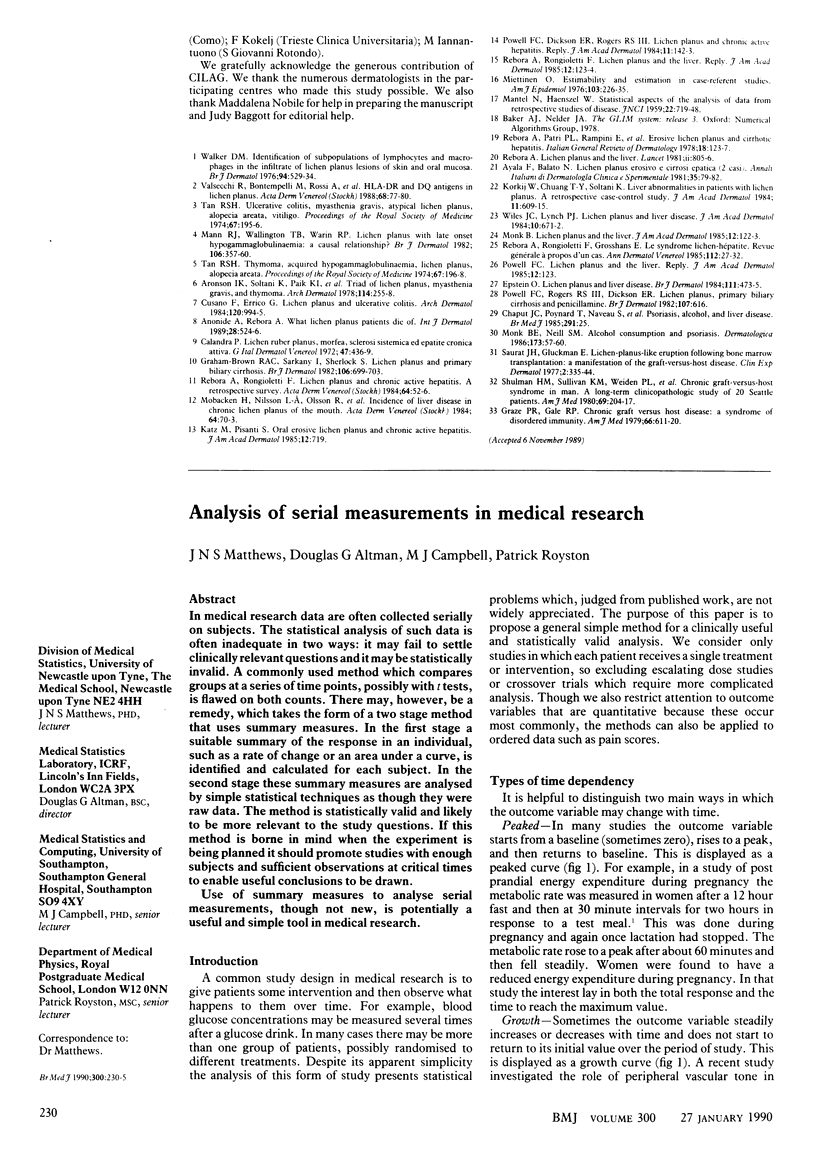
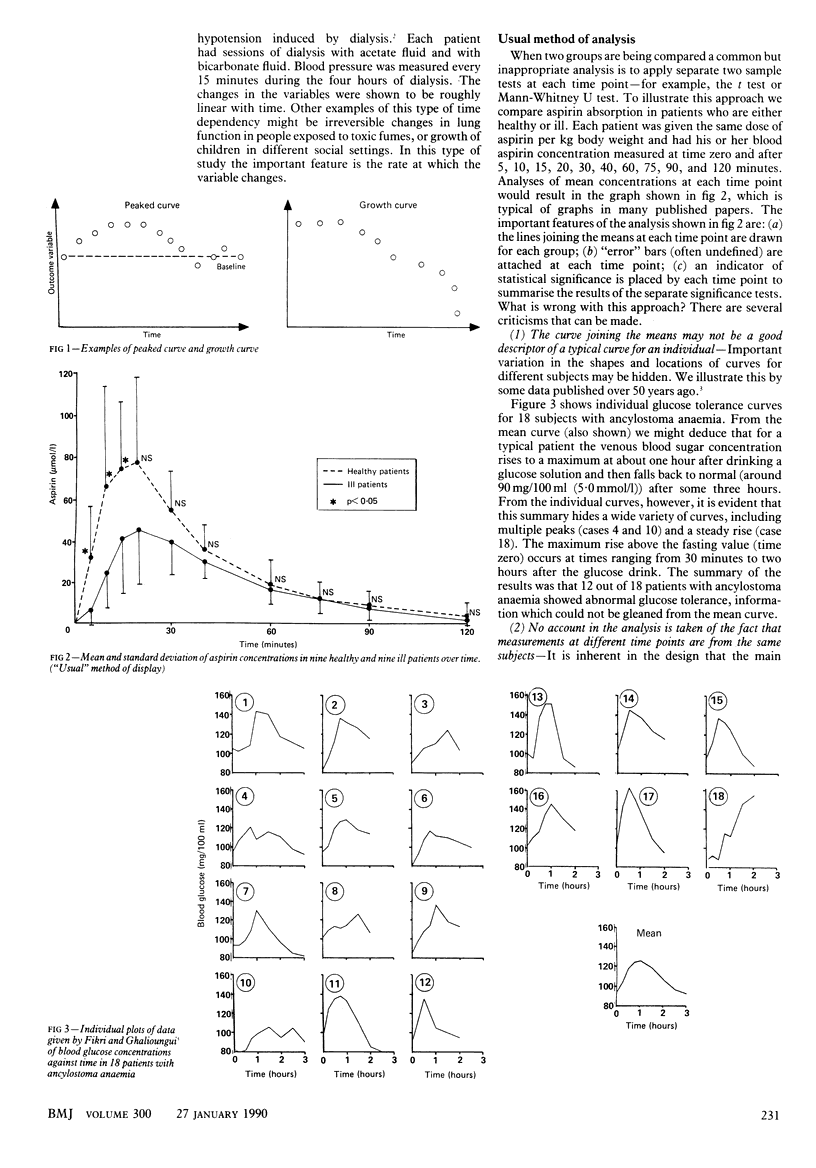
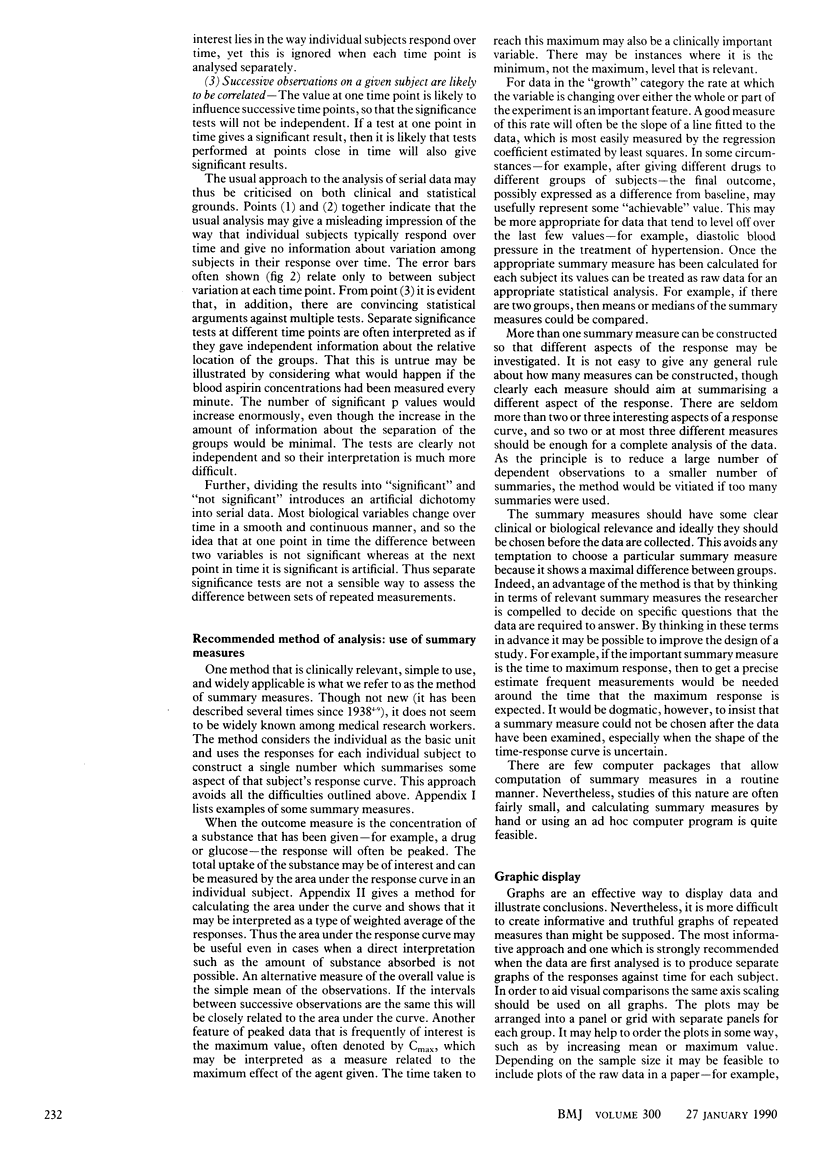
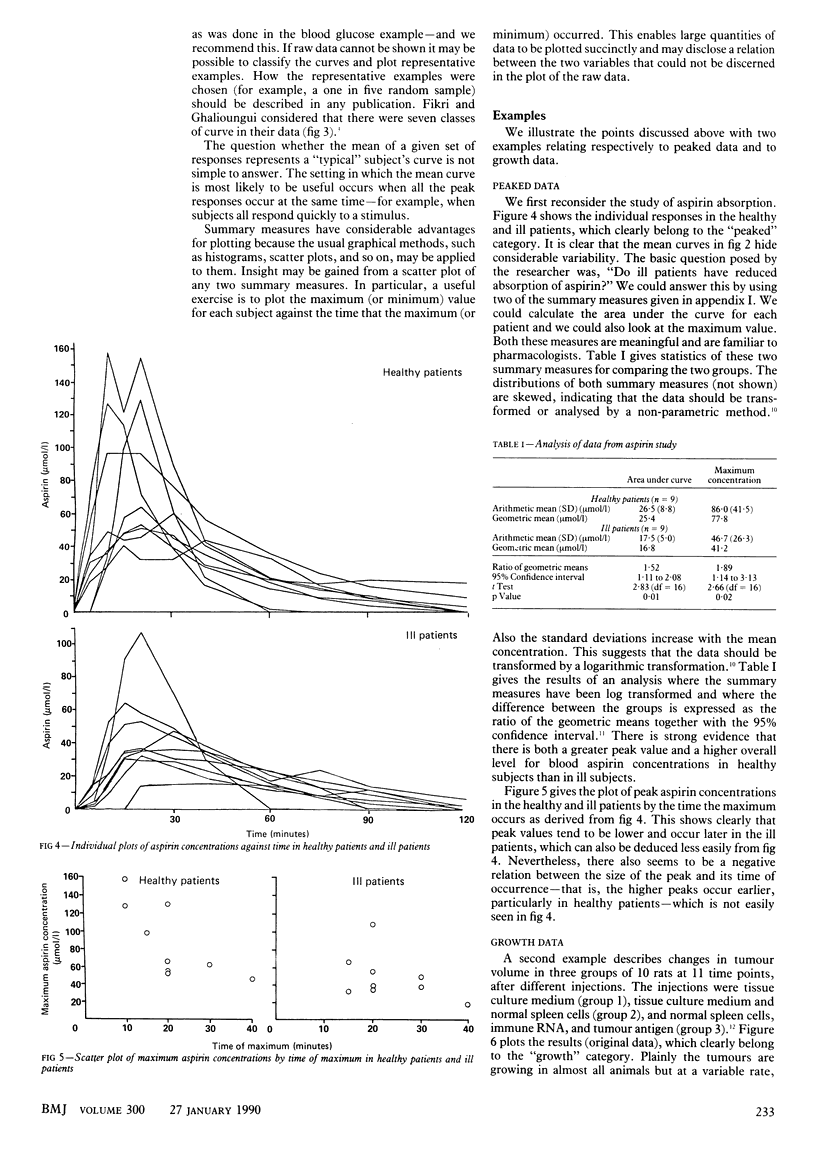
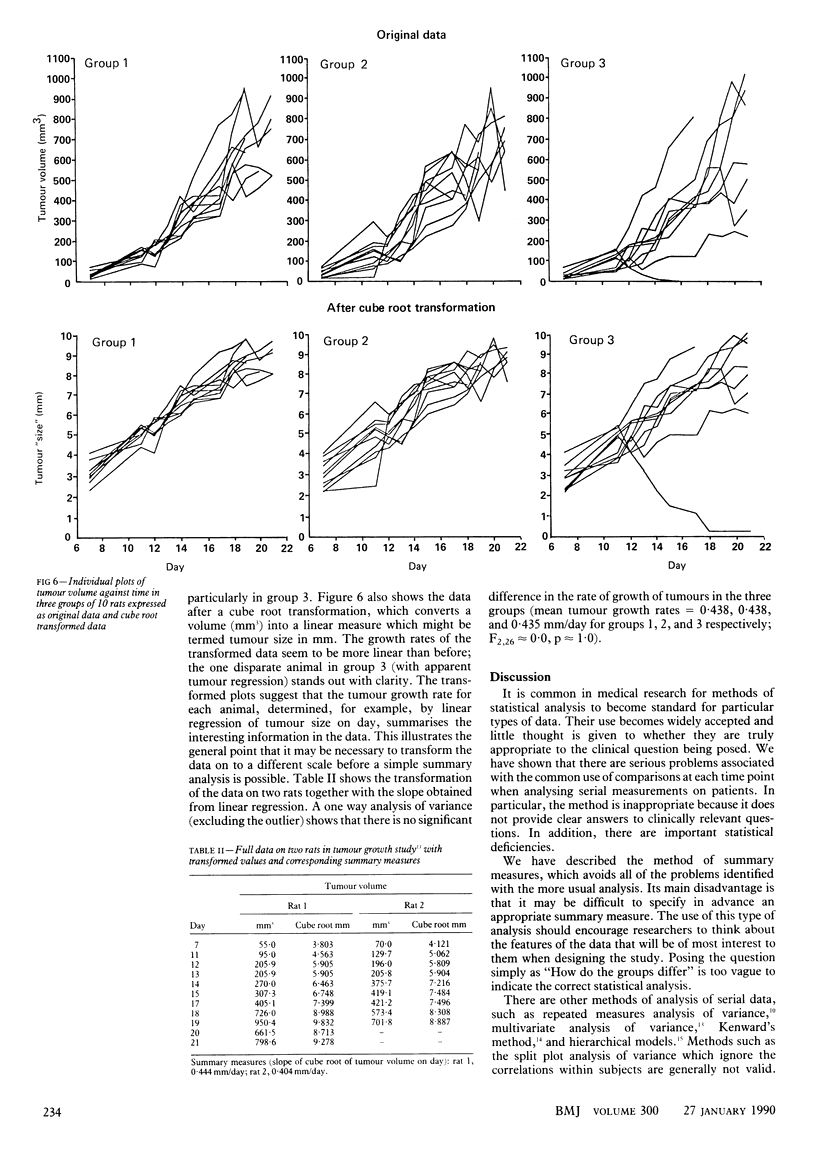
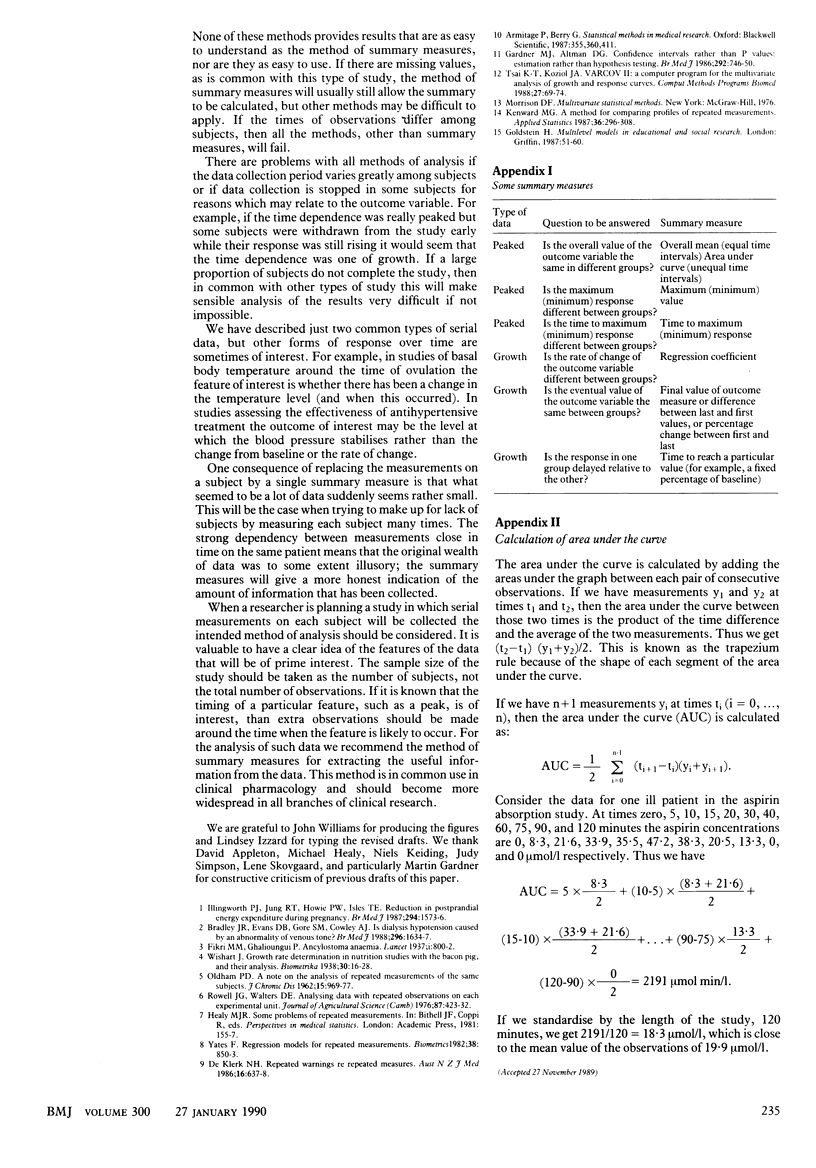
Selected References
These references are in PubMed. This may not be the complete list of references from this article.
- Bradley J. R., Evans D. B., Gore S. M., Cowley A. J. Is dialysis hypotension caused by an abnormality of venous tone? Br Med J (Clin Res Ed) 1988 Jun 11;296(6637):1634–1637. doi: 10.1136/bmj.296.6637.1634. [DOI] [PMC free article] [PubMed] [Google Scholar]
- Gardner M. J., Altman D. G. Confidence intervals rather than P values: estimation rather than hypothesis testing. Br Med J (Clin Res Ed) 1986 Mar 15;292(6522):746–750. doi: 10.1136/bmj.292.6522.746. [DOI] [PMC free article] [PubMed] [Google Scholar]
- Illingworth P. J., Jung R. T., Howie P. W., Isles T. E. Reduction in postprandial energy expenditure during pregnancy. Br Med J (Clin Res Ed) 1987 Jun 20;294(6587):1573–1576. doi: 10.1136/bmj.294.6587.1573. [DOI] [PMC free article] [PubMed] [Google Scholar]
- OLDHAM P. D. A note on the analysis of repeated measurements of the same subjects. J Chronic Dis. 1962 Oct;15:969–977. doi: 10.1016/0021-9681(62)90116-9. [DOI] [PubMed] [Google Scholar]
- Tsai K. T., Koziol J. A. VARCOV II: a computer program for the multivariate analysis of growth and response curves. Comput Methods Programs Biomed. 1988 Jul-Aug;27(1):69–74. doi: 10.1016/0169-2607(88)90105-8. [DOI] [PubMed] [Google Scholar]
- de Klerk N. H. Repeated warnings re repeated measures. Aust N Z J Med. 1986 Oct;16(5):637–638. doi: 10.1111/j.1445-5994.1986.tb00001.x. [DOI] [PubMed] [Google Scholar]


